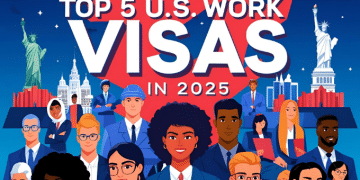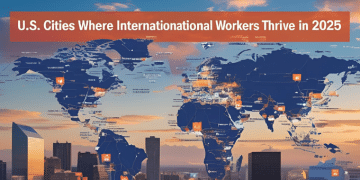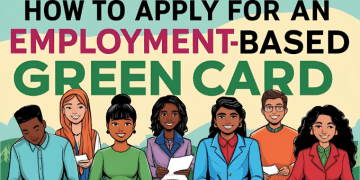Complete Guide To The H1B Visa In 2025
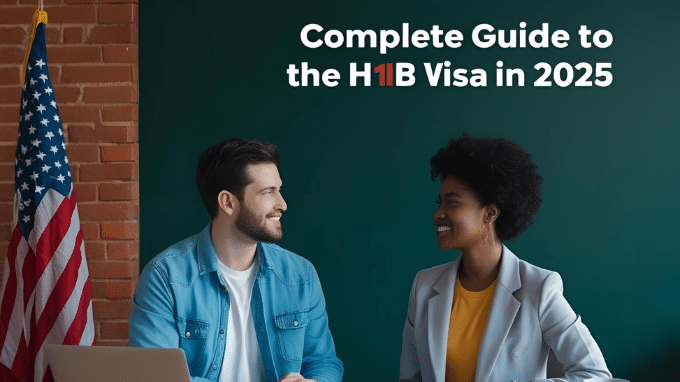
The United States continues to be a top destination for international talent, especially in technology, engineering, finance, and healthcare. Among various work visas USA offers, the H1B visa stands out as one of the most popular routes for skilled foreign professionals seeking to build a career in the U.S. As we move through 2025, understanding the H1B visa process is more crucial than ever, particularly with evolving immigration laws and a highly competitive job market.
If you’re a foreign national hoping to work in the United States or a U.S. employer looking to hire global talent, this comprehensive guide will break down everything you need to know.
Here’s what this guide will cover:
- What the H1B visa is and why it matters in 2025
- Eligibility and requirements for applicants and employers
- Step-by-step breakdown of the H1B visa process
- Costs involved for both employees and sponsoring companies
- Key updates and trends in U.S. immigration laws
- Alternatives to the H1B visa (including OPT for students and employment-based green card pathways)
- Pro tips for increasing your approval chances
What Is the H1B Visa?
The H1B visa is a non-immigrant visa that allows U.S. companies to employ foreign workers in specialty occupations requiring theoretical or technical expertise. This includes fields like IT, finance, accounting, architecture, engineering, medicine, and more.
Why the H1B Visa Matters in 2025 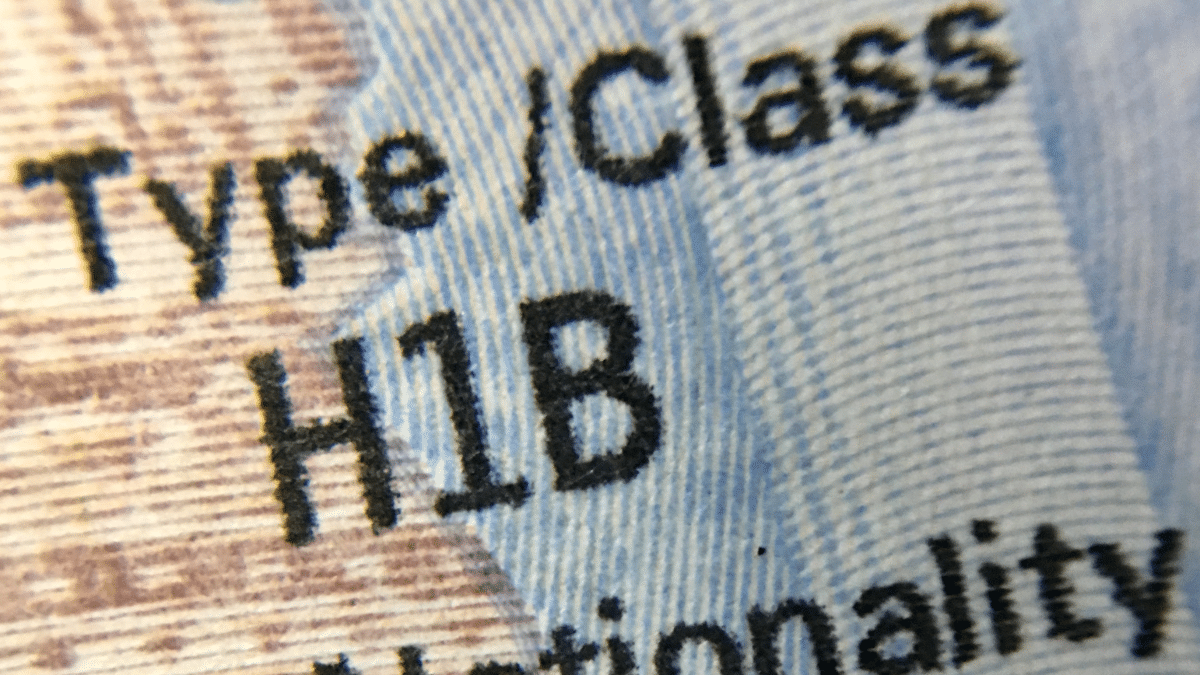
In today’s globalized job market, companies are increasingly looking to attract top international talent.
The H1B visa provides a legal framework for this. With recent changes in remote work policies, hybrid office environments, and the resurgence of tech hiring in 2025, demand for the H1B visa has rebounded significantly after post-pandemic slowdowns.
Read next: H1B vs L1 Visa: Key Differences, Requirements & Which Is Better in 2025
Who Is Eligible for the H1B Visa?
Basic Eligibility Requirements
To qualify for an H1B visa, you must:
- Have a job offer from a U.S. employer for a specialty occupation
- Possess at least a bachelor’s degree or its equivalent in a relevant field
- Meet the state licensing requirements if your profession requires one (e.g., doctors, lawyers)
Employer Requirements
Employers must:
- Demonstrate the position qualifies as a specialty occupation
- File a Labor Condition Application (LCA) with the U.S. Department of Labor
- Pay the prevailing wage to the employee
Common Occupations Approved for H1B:
- Software Developers
- Data Scientists
- Engineers (Mechanical, Electrical, Civil)
- Accountants
- Financial Analysts
- Medical Professionals
H1B Visa Process: Step-by-Step
Successfully obtaining an H1B visa requires navigating a series of structured and time-sensitive steps. Here is a detailed breakdown of each phase in the 2025 application process:
1. Employer Files Labor Condition Application (LCA)
Before an employer can sponsor an H1B worker, they must first obtain a certified Labor Condition Application from the U.S. Department of Labor (DOL). The LCA is crucial because it demonstrates that:
- The job meets the definition of a specialty occupation.
- The foreign worker will be paid at least the prevailing wage for the position.
- Hiring foreign workers will not negatively affect the working conditions of U.S. employees.
Processing Time: Typically 7 business days, but can take longer during peak seasons.
2. Employer Submits Form I-129 to USCIS
Once the LCA is certified, the employer submits Form I-129 (Petition for a Nonimmigrant Worker) to U.S. Citizenship and Immigration Services (USCIS). This petition must include:
- A copy of the certified LCA
- Evidence of the employee’s qualifications (degrees, transcripts, evaluations, etc.)
- Job description and offer letter
Employers can choose regular processing or premium processing, which expedites the decision within 10 business days.
3. H1B Lottery Registration (If Cap-Subject)
The H1B visa is subject to an annual cap:
- Regular Cap: 65,000 visas
- Master’s Cap: Additional 20,000 visas for holders of U.S. advanced degrees
Key Points:
- Employers must register electronically with USCIS during the registration window (usually March).
- If registrations exceed the cap, USCIS conducts a lottery.
- Selected applicants are invited to file a full petition.
Tip: Advanced degree holders get a second chance in the lottery if not selected in the first round.
4. USCIS Processing and RFE (If Applicable)
After submission, USCIS reviews the petition. In some cases, they may issue a Request for Evidence (RFE) if the documentation is incomplete or if they require clarification on eligibility.
Common RFE Triggers:
- Mismatch between job role and degree
- Concerns over specialty occupation status
- Employer credibility or insufficient wage data
Response Time: Typically, 60 days to respond to RFE.
5. Visa Application at U.S. Embassy or Consulate (Outside U.S.)
If the applicant is outside the United States, they must apply for the actual visa stamp at a U.S. consulate or embassy. This includes:
- Filling out Form DS-160
- Paying the visa application fee
- Attending a consular interview
During the interview, applicants should bring all supporting documents, including the approved I-129, job offer, degree certificates, and identification.
6. Change of Status (If Inside the U.S.)
If the applicant is already in the U.S. on a different status (such as F-1 or OPT), a change of status can be processed without leaving the country.
Once approved, the applicant can begin working on H1B status from the start date mentioned in the petition.
Read next: Top 5 Work Visas for International Workers in 2025
7. Start Working in the U.S.
Approved applicants can begin working in the U.S. on or after October 1, which marks the beginning of the federal fiscal year.
Work Authorization Validity:
- Initial approval: Up to 3 years
- Extension: Up to 6 years total
Beyond six years, applicants typically pursue permanent residency via an employment-based green card.
Important Timelines
- Registration Window: March of each year
- Lottery Results: Usually announced in April
- Petition Filing: April to June
- Employment Start Date: October 1 of the same year
H1B Visa Cost Breakdown
For Employers:
- Base filing fee: $460
- AICWA training fee: $750 (for companies with 1-25 employees) or $1,500 (26+ employees)
- Fraud prevention fee: $500
- Public Law 114-113 fee: $4,000 (for companies with 50+ employees and more than 50% H1B/L1 workers)
- Premium processing (optional): $2,805 (as of 2025)
For Employees:
- Visa application fee: $205 (varies by country)
- Travel and document preparation expenses
Total Estimated Employer Cost: $5,000 to $10,000+ per applicant
Key Updates in Immigration Laws (2025)
- Digital-First Application Process: The USCIS now supports fully digital petition submissions and e-signatures.
- Wage Level Enforcement: More stringent reviews are being conducted to ensure employers pay fair wages.
- Shorter Processing Times: Premium processing timelines have been shortened to 10 business days.
Alternatives to the H1B Visa
Optional Practical Training (OPT for Students)
For international students on F-1 visas, OPT provides temporary work authorization for up to 12 months post-graduation, or up to 36 months for STEM graduates.
Employment-Based Green Card (EB-2 and EB-3)
For those seeking permanent residency, employment-based green card options may be a more secure route. These require PERM labor certification and employer sponsorship.
Other Visa Types:
- L1 Visa: For intracompany transfers
- O-1 Visa: For individuals with extraordinary abilities
Read next: Best Cities for Tech Jobs in the USA
Tips to Improve H1B Visa Approval Chances
- Apply Early: Ensure all paperwork is prepared ahead of the lottery deadline.
- Use Reputable Employers: USCIS heavily scrutinizes companies with prior violations.
- Demonstrate Job-Qualification Match: Strongly connect your education and experience with the job role.
- Consider Premium Processing: Speeds up adjudication and provides peace of mind.
Is the H1B Visa Right for You?
The H1B visa remains a gateway to exciting career opportunities in the United States. Despite its complexities, it’s a well-structured pathway for skilled professionals aiming to contribute to the U.S. economy. Whether you’re fresh out of a U.S. university or a seasoned global expert, understanding the ins and outs of the H1B visa in 2025 can significantly impact your journey.
Ready to get started?
Take control of your future today—don’t wait until the next H1B season catches you off guard. Join our community of ambitious professionals and forward-thinking companies. Download our free H1B prep checklist, schedule a consultation with a certified immigration expert, and gain exclusive access to insider strategies that boost your chances of approval. Your American dream is just a smart decision away—act now!
